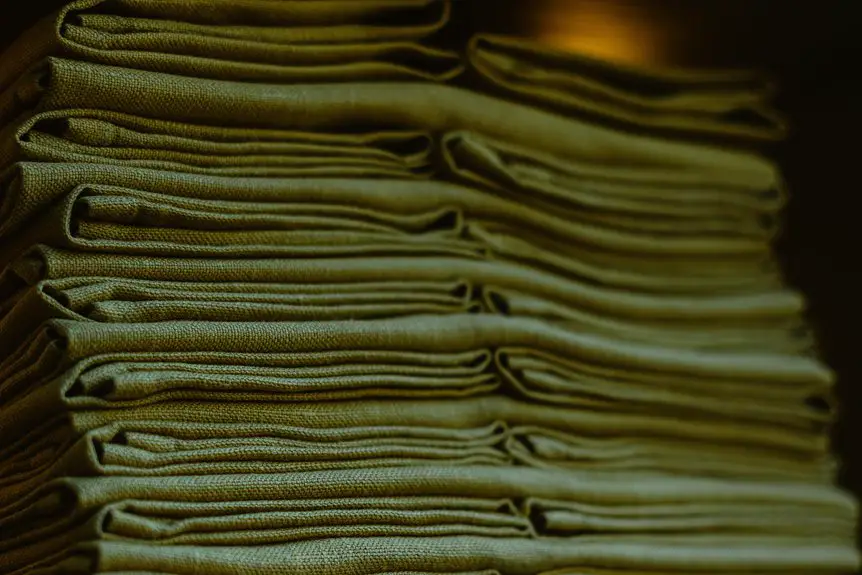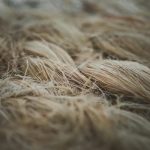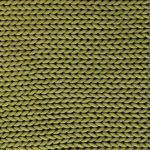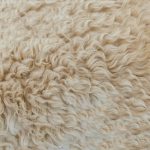When you choose a fabric blend of viscose and polyamide, you get a mix of natural softness and synthetic strength. Viscose, made from wood pulp, feels soft and breathable, while polyamide adds durability, elasticity, and quick-drying power. This combo helps clothes keep their shape and resist wear. You’ll find these blends in everything from stylish dresses to durable activewear. There’s plenty more to discover about how these fabrics work together to keep you comfortable and looking great.
Table of Contents
Key Takeaways
- Viscose is a semi-synthetic fiber made from natural cellulose, offering softness and excellent moisture absorption.
- Polyamide (nylon) is a strong, synthetic fiber known for durability, elasticity, and quick-drying properties.
- Blending viscose with polyamide balances natural comfort with enhanced strength and shape retention.
- These blends are used in apparel, lingerie, activewear, and home textiles for their combined aesthetic and functional benefits.
- Viscose-polyamide fabrics provide softness, durability, breathability, and resistance to wear, making them versatile for everyday use.
Understanding Viscose: Origin and Production
Although you mightn’t realize it, viscose plays a significant role in many fabric blends you wear every day. Viscose, often called rayon, originates from natural cellulose found in wood pulp.
The production process begins by treating this cellulose with chemicals to create a thick, honey-like liquid. This liquid is then forced through tiny holes in a spinneret, forming fine fibers that solidify into threads. These threads can be woven or knitted into fabric.
You’ll find that viscose combines the natural origin of wood with a man-made transformation, offering a versatile material. Its manufacturing balances nature and technology, making it a popular choice for blending with other fibers to enhance fabric properties without relying solely on synthetic materials.
Key Characteristics of Viscose Fabric
Viscose’s unique production process gives it several standout qualities that impact how it feels and performs as a fabric.
When you wear viscose, you’ll notice its soft, smooth texture that feels comfortable against your skin. It drapes beautifully, making it ideal for flowing garments like dresses and blouses.
Viscose also absorbs moisture well, so it keeps you cool and dry in warm weather. However, it wrinkles easily, so you’ll need to handle it with care when washing and storing.
Viscose absorbs moisture to keep you cool but requires gentle care to prevent wrinkles.
Though not as strong when wet, viscose remains breathable and lightweight, offering versatility in your wardrobe.
What Is Polyamide and How Is It Made?
Polyamide, commonly known as nylon, is a synthetic fabric prized for its strength and durability. You’ll find it in everything from clothing to industrial products.
Polyamide is made through a chemical process called polymerization, where small molecules called monomers link together to form long chains called polymers.
Here’s a quick look at how polyamide is made:
- Monomers like hexamethylenediamine and adipic acid are combined.
- These monomers undergo condensation polymerization.
- The resulting polymer forms long polyamide chains.
- The polymer is melted and extruded through spinnerets to create fibers.
- Fibers are cooled, stretched, and spun into yarn or fabric.
This controlled process gives you a versatile fabric with consistent quality.
Properties and Advantages of Polyamide
When you choose polyamide fabrics, you benefit from their exceptional strength and resistance to wear. This synthetic fiber is lightweight yet durable, making it perfect for garments that need to withstand frequent use.
Polyamide resists abrasion and stretching, so your clothes maintain their shape and look better longer. It also dries quickly and handles moisture well, which keeps you comfortable in various conditions.
Additionally, polyamide has excellent elasticity, providing flexibility and ease of movement. You’ll find it resists wrinkles and is easy to care for, often requiring less ironing.
Plus, its resistance to chemicals and mildew adds to its longevity. With these properties, polyamide offers practical advantages that enhance both everyday wear and performance apparel.
Why Blend Viscose With Polyamide?
Although both fibers have strong individual qualities, blending viscose with polyamide creates a fabric that balances comfort and durability.
You get the best of both worlds when you combine viscose’s softness and breathability with polyamide’s strength and resilience.
This blend helps you enjoy fabrics that:
- Feel smooth and gentle against your skin
- Resist wear and tear better than pure viscose
- Dry faster thanks to polyamide’s moisture-wicking ability
- Maintain shape and resist wrinkles more effectively
- Offer versatility for various uses without sacrificing comfort
Common Uses of Viscose and Polyamide Blends
You’ll find viscose and polyamide blends in a variety of apparel, from soft dresses to durable activewear.
These fabrics also work well in home textiles like curtains and upholstery, offering both comfort and strength.
Let’s explore how these blends fit into your everyday wardrobe and living space.
Apparel Applications
Because viscose and polyamide blends combine softness with durability, they’re popular choices in many types of apparel.
You’ll find these fabrics used where comfort and longevity matter most. Their versatility lets designers create garments that feel great against your skin while standing up to regular wear.
You’ll often see viscose-polyamide blends in:
- Casual dresses and skirts that drape beautifully
- Lightweight blouses with a smooth finish
- Activewear offering stretch and moisture management
- Lingerie combining softness with shape retention
- Outerwear linings that add comfort and resilience
When you pick clothes made from these blends, you’re choosing fabrics that balance aesthetic appeal with practical performance, making your wardrobe both stylish and durable.
Home Textile Uses
Viscose and polyamide blends serve several key roles in home textiles, offering a balance of softness, strength, and easy care.
When you choose curtains, upholstery, or cushion covers made from this blend, you get fabrics that feel smooth yet stand up to daily wear. These blends resist wrinkles better than pure viscose, so your drapes stay neat with minimal effort.
You’ll also find them in bed linens and throws, where their breathability keeps comfort high without sacrificing durability. Plus, polyamide adds moisture-wicking properties, helping fabrics dry quickly and resist mildew.
Caring for Fabrics Containing Viscose and Polyamide
When caring for fabrics with viscose and polyamide, you’ll want to follow specific washing guidelines to keep them looking their best.
Avoid high temperatures and harsh detergents to prevent damage.
Also, proper storage—like folding instead of hanging—helps maintain their shape and texture over time.
Washing Guidelines
Caring for fabrics that combine viscose and polyamide requires special attention to maintain their softness and durability.
When washing these blends, you want to be gentle to avoid damage or distortion. Here’s how to do it right:
- Use cold or lukewarm water to prevent shrinking or weakening fibers.
- Select a mild detergent designed for delicate fabrics.
- Avoid bleach and fabric softeners, as they can break down fibers.
- Choose a gentle cycle or hand wash to reduce agitation.
- Lay flat or hang to dry; avoid tumble drying to maintain fabric shape.
Storage Tips
After washing your viscose and polyamide fabrics with care, proper storage helps keep them in great condition.
Store these items in a cool, dry place away from direct sunlight to prevent fading and fiber damage. Avoid hanging viscose-heavy garments, as they can stretch or lose shape; instead, fold them gently to maintain their structure.
For polyamide blends, you can hang them on padded hangers to avoid creases. Use breathable cotton storage bags or containers to allow air circulation and prevent moisture buildup, which causes mildew.
Keep fabrics away from harsh chemicals or rough surfaces to avoid snags or discoloration. Regularly check stored garments to guarantee they remain fresh and wrinkle-free, making your viscose and polyamide pieces last longer and look great every time you wear them.
Frequently Asked Questions
Are Viscose and Polyamide Fabrics Environmentally Friendly?
You shouldn’t expect viscose and polyamide to be fully eco-friendly. Viscose comes from wood pulp but involves chemical processing, while polyamide is a synthetic, petroleum-based fiber. Both have environmental impacts you should consider.
Can Viscose-Polyamide Blends Cause Skin Allergies?
You might find that viscose-polyamide blends are gentle on your skin, but if you have sensitive skin, they could occasionally cause mild irritation. It’s wise to test a small patch first to avoid any surprises.
How Do Viscose and Polyamide Blends Compare in Cost?
You’ll find viscose generally costs less than polyamide, but blends balance price and performance. Since polyamide adds durability, the blend’s cost might be slightly higher than pure viscose but still affordable for quality fabrics.
Are Viscose-Polyamide Blends Suitable for Athletic Wear?
Looking for breathable, stretchy fabrics that handle sweat well? You’ll find viscose-polyamide blends offer softness and durability, but they may not wick moisture as efficiently as specialized synthetics, so they’re okay for light workouts, not intense training.
Can Viscose and Polyamide Fabrics Be Recycled?
You can recycle viscose and polyamide, but it’s tricky due to their different fibers. You’ll often need specialized facilities to separate and process them properly, so check local recycling options before tossing blended fabrics in your bin.
- Fabric Blends Explained: What Is Viscose and Polyamide? - June 30, 2025
- Does a Viscose and Polyamide Blend Shrink? Care Tips - June 30, 2025
- How to Safely Wash Viscose and Polyamide Blends - June 30, 2025







